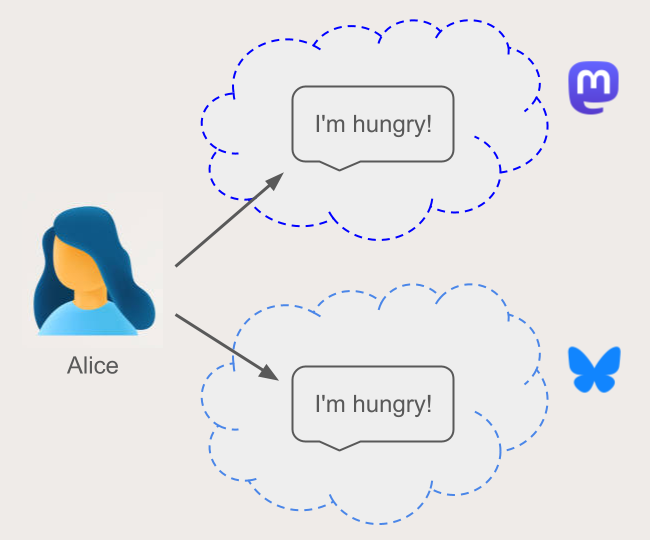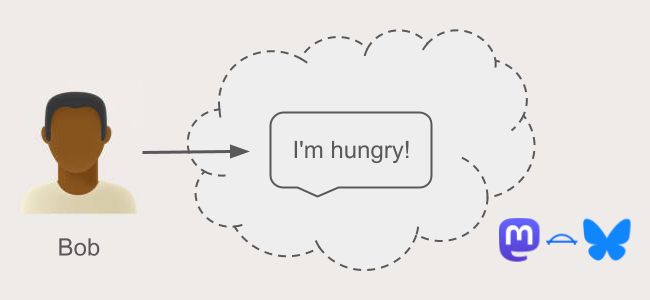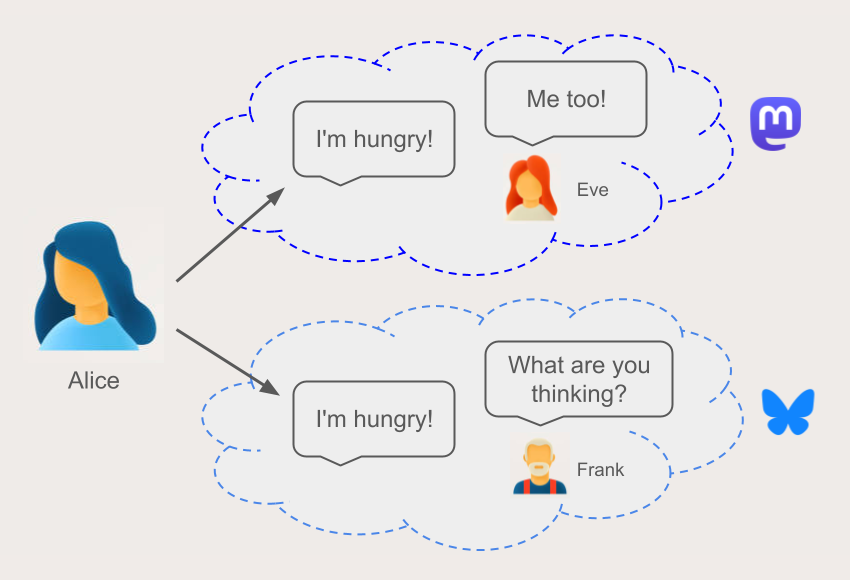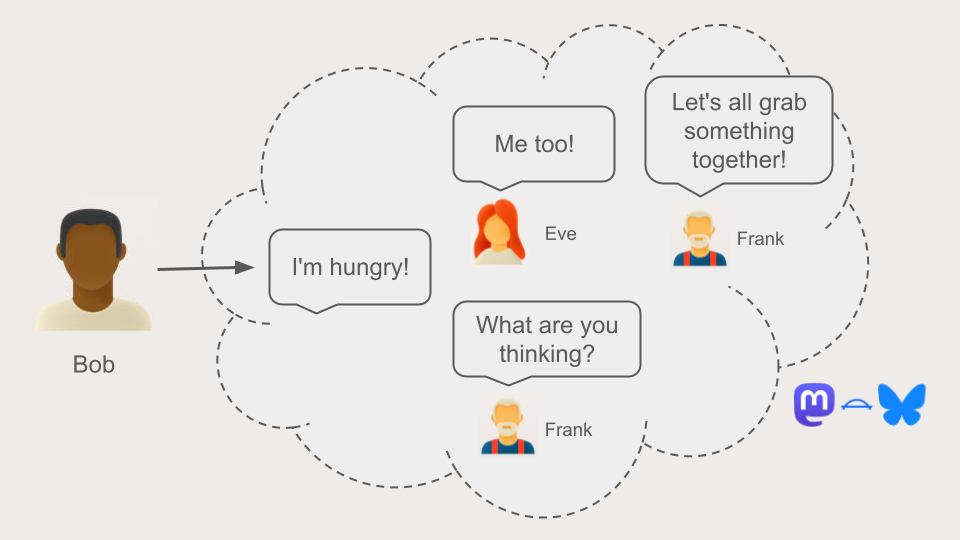Bridging vs cross-posting

When we talk about what we do here, one topic that comes up often is bridging vs cross-posting. They’ve both been around for a long time, and they’re similar, but they’re different in some important ways. Notably, bridging results in more unified conversations, while cross-posted conversations are more fragmented. That difference isn’t always obvious, but we think it can be important.
Cross-posting starts out pretty straightforward. Instead of posting to just one network, you set up multiple accounts, on multiple networks, and post to all of them at the same time. So far, so good.

Bridges, on the other hand, extend posts from one network into another. The posts are connected together, in ways that the ecosystem can see and use.

At first glance, these seem similar. The plumbing may work differently, but the end result is the same: Alice and Bob both post to Bluesky and the fediverse at the same time, automatically.
The interesting bit happens when other people respond. Say Eve replies on the fediverse, and Frank replies on Bluesky. Since Alice cross-posted, each reply stays on its own network. Alice may see them both, but Frank doesn’t see Eve’s reply, and Eve doesn’t see Frank’s. The conversation is fragmented.

This is true even if Eve and Frank themselves are bridged! Cross-posted posts generally aren’t linked in any standard way that bridges can see or use. Bridgy Fed, for example, doesn’t bridge replies to un-bridged posts, and it doesn’t know that Alice’s posts were cross-posted, so it can’t bridge these replies.
However, this all changes if Alice herself is bridged. The bridge knows that her post is bridged, so when Eve and Frank reply, it can bridge those replies and connect them to her original posts. Eve and Frank can see and reply to each other, and the overall conversation is unified.

Some modern cross-posting clients have sophisticated logic that gets close to this. Along with posting to multiple networks, they sometimes read from multiple networks too, seamlessly merging the different timelines and feeds and activities. Some keep track of cross-posted posts, merging their replies and threads into conversations that look unified. Some may even store those mappings centrally, and use them to merge conversations for everyone who uses the client.
However, they can only do this for their own users. A cross-posting client can’t change what people see outside of it. Here, it can’t make Eve or Frank see each other’s replies. That means that the conversation stays fragmented by network, even for the cross-posting client’s users. Frank may have something useful to say to Eve, but if Frank never sees Eve’s reply, that conversation never happens.
To be fair, there are benefits to cross-posting. It’s usually less complicated to develop. It can be done entirely client side. And it lets users bring their own native accounts, and continue to use them outside the client, whereas bridges like Bridgy Fed often fully own and manage their bridged accounts.
These are meaningful differences. Cross-posting and bridging are both useful; both have their place. We build and run tools that do both ourselves: Bridgy classic for cross-posting, Bridgy Fed for bridging. When we talk with partners in the space, we regularly find ourselves recommending both of them, at different times, depending on the situation.
Even so, while the difference between fragmented and unified conversations may be subtle, especially with advanced clients, we think it’s important and worth keeping in mind.
If you’re a developer and this piques your interest, check out the Bridgy Fed developer docs, and feel free to reach out to us, we’d love to work with you!